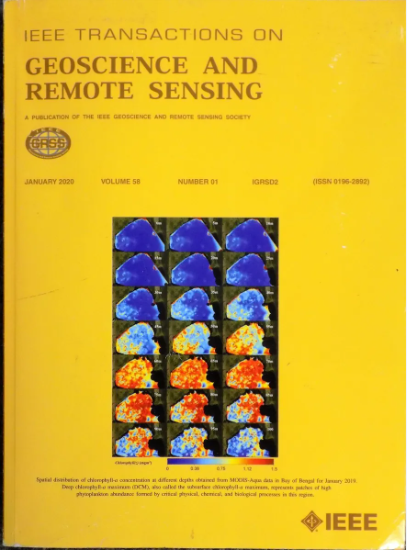多径利用:阵列-InSAR 三维成像中的非视距目标定位
IF 7.5
1区 地球科学
Q1 ENGINEERING, ELECTRICAL & ELECTRONIC
IEEE Transactions on Geoscience and Remote Sensing
Pub Date : 2024-09-18
DOI:10.1109/TGRS.2024.3463003
引用次数: 0
摘要
随着合成孔径雷达三维成像技术的发展,无人机载阵列干涉合成孔径雷达(Array-InSAR)实现了城市三维成像,使合成孔径雷达数据的获取更加简单。然而,在对城市场景进行低空合成孔径雷达三维成像时,多径效应非常明显。在过去的研究中,多径信号大多被认为是解译的障碍,但它们为非视距(NLOS)区域隐藏目标的成像提供了重要线索。基于这一观点,本文研究了低空无人机载阵列-InSAR 三维成像中的多径利用,实现了对非视距目标的精确成像。文章介绍了一种适用于低空情况的改进型三维成像模型,以实现初步的三维成像。随后,从原始结果中提取关键平面,分析三维多径可达区域。在获得 NLOS 目标的多径机制后,最终可对其进行精确定位和成像。仿真和实际数据实验均表明,所提出的方法能有效地对城市峡谷中的无近地轨道目标进行三维成像和重新定位,误差一般在 0.5 米以下,地面测距方向的可成像范围扩大了 41.62%,可成像三维区域扩大了 76.57%,实现了无近地轨道信息的获取。本文章由计算机程序翻译,如有差异,请以英文原文为准。
Multipath Exploitation: Non-Line-of-Sight Target Relocation in Array-InSAR 3-D Imaging
With the development of synthetic aperture radar (SAR) 3-D imaging technology, urban 3-D imaging has been realized by unmanned aerial vehicle (UAV)-borne array interferometric SAR (array-InSAR), which enables simpler access to SAR data. However, in low-altitude SAR 3-D imaging of urban scenes, multipath effect is significant. In past studies, multipath signals have been mostly considered as a hindrance in interpretation, but they provide important clues for imaging hidden targets in non-line-of-sight (NLOS) regions. Based on this idea, this article studies the multipath exploitation in low-altitude UAV-borne array-InSAR 3-D imaging and realizes accurate imaging of NLOS targets. An improved 3-D imaging model suitable for low-altitude cases is introduced to achieve preliminary 3-D imaging. Subsequently, key planes are extracted from the original results and the 3-D multipath reachable area is analyzed. After obtaining the multipath mechanism of the NLOS targets, they can eventually be accurately relocated and imaged. Both the simulation and real-data experiments show that the proposed method can effectively 3-D imaging and relocate NLOS targets in urban canyons, with errors typically below 0.5 m. The imageable range in the direction of the ground range can be expanded by 41.62%, and the imageable 3-D area can be expanded by 76.57%, which realizes the NLOS information acquisition.
求助全文
通过发布文献求助,成功后即可免费获取论文全文。
去求助
来源期刊

IEEE Transactions on Geoscience and Remote Sensing
工程技术-地球化学与地球物理
CiteScore
11.50
自引率
28.00%
发文量
1912
审稿时长
4.0 months
期刊介绍:
IEEE Transactions on Geoscience and Remote Sensing (TGRS) is a monthly publication that focuses on the theory, concepts, and techniques of science and engineering as applied to sensing the land, oceans, atmosphere, and space; and the processing, interpretation, and dissemination of this information.
 求助内容:
求助内容: 应助结果提醒方式:
应助结果提醒方式:


